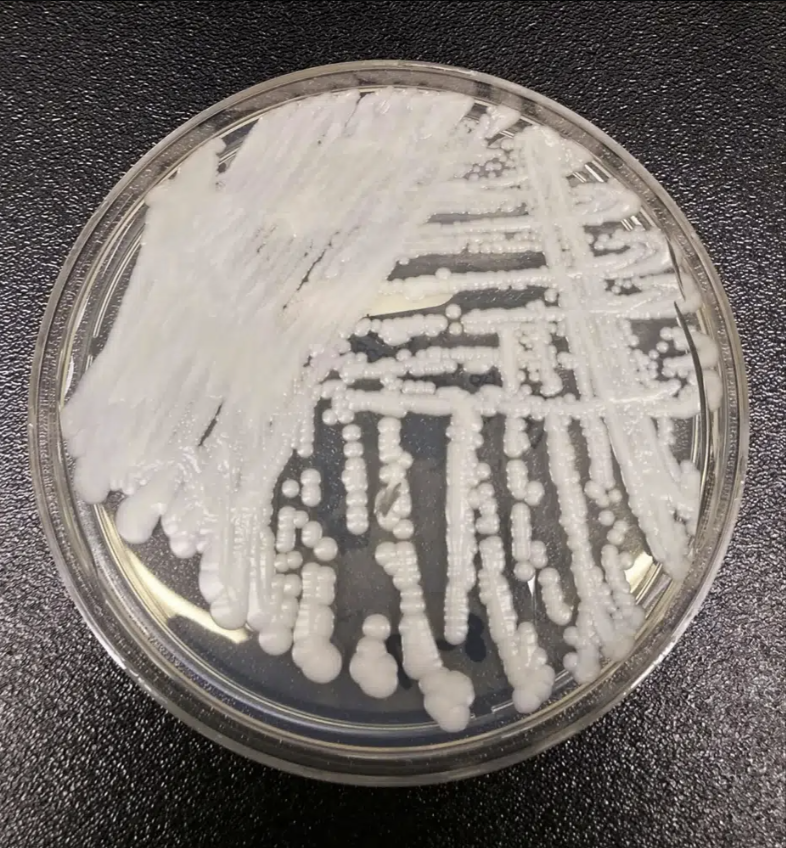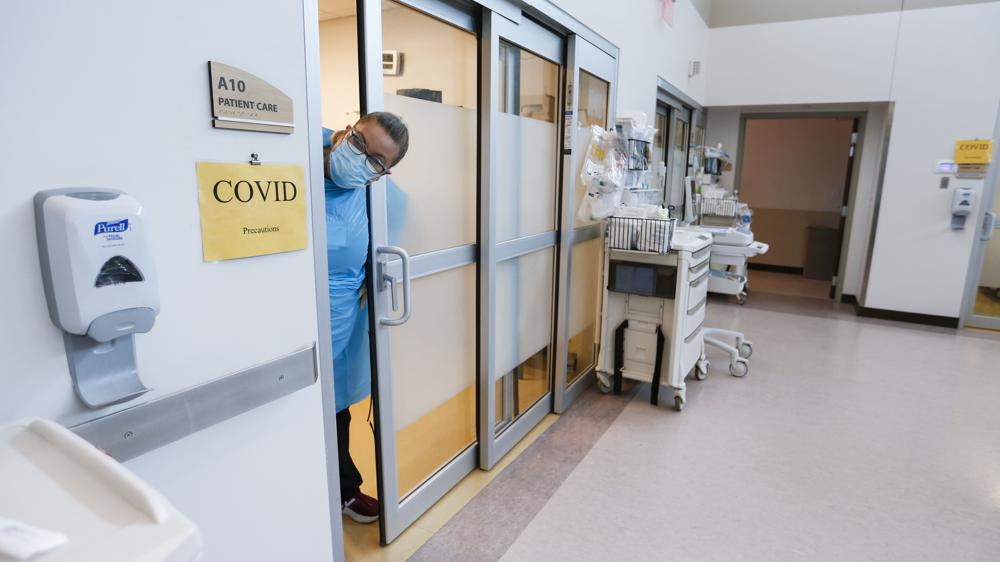
This undated photo made available by the Centers for Disease Control and Prevention shows a strain of Candida auris cultured in a petri dish at a CDC laboratory. In a CDC paper published by the Annals of Internal Medicine on Monday, March 20, 2023, U.S. cases of the dangerous fungus tripled over just three years, and more than half of states have now reported it. /AP
This undated photo made available by the Centers for Disease Control and Prevention shows a strain of Candida auris cultured in a petri dish at a CDC laboratory. In a CDC paper published by the Annals of Internal Medicine on Monday, March 20, 2023, U.S. cases of the dangerous fungus tripled over just three years, and more than half of states have now reported it. /AP
A deadly and drug-resistant fungus has been spreading rapidly across the U.S., according to a new study by the Centers for Disease Control and Prevention (CDC).
The fungus, known as Candida auris or C. auris, is a type of yeast that can cause serious infections in people, especially those who are hospitalized or have weakened immune systems, with a mortality rate of up to 60%, according to the CDC.
The number of people diagnosed with infections – as well as the number of those who were found through screening to be carrying C. auris – has been rising at an alarming rate since it was first reported in the U.S. several years ago, researchers from CDC said on Monday.
Authors of the CDC study rated the fungus' spread as an "urgent threat" because it is often resistant to multiple anti-fungal drugs, making it difficult to treat. The fungus can also survive on surfaces in healthcare facilities for weeks or months, and can be spread from person to person through contact with contaminated surfaces or equipment.
In the U.S., the first case of C. auris was reported in 2016. Since then, the fungus has been found in healthcare facilities in several states, including New York, New Jersey, California, Texas, and Florida.
Cases of the deadly fungus have tripled in the U.S. from 2019 to 2021, according to data from the CDC. C. auris was reported in the U.S. in 2016 and cases have climbed ever since. Annual clinical case counts rose to 476 in 2019 before increasing to 756 in 2020, a 59% jump. Cases then soared to 1,471 in 2021, which is an additional 95% jump.
"The rapid rise and geographic spread of cases is concerning and emphasizes the need for continued surveillance, expanded lab capacity, quicker diagnostic tests, and adherence to proven infection prevention and control,” said CDC epidemiologist Dr. Meghan Lyman, lead author of the study.

In this file photo from July 16, 2021, a nurse sticks her head out of the room of a COVID-19 patient in the CoxHealth Emergency Department in Springfield, Missouri. The COVID-19 pandemic has created a nurse staffing crisis that is forcing many U.S. hospitals to pay top dollar to get the help they need to handle the rush of patients this summer. /AP
In this file photo from July 16, 2021, a nurse sticks her head out of the room of a COVID-19 patient in the CoxHealth Emergency Department in Springfield, Missouri. The COVID-19 pandemic has created a nurse staffing crisis that is forcing many U.S. hospitals to pay top dollar to get the help they need to handle the rush of patients this summer. /AP
The CDC attributed the fungus' rapid spread to several reasons, including poor general infection prevention and control practices in healthcare facilities and the heavy strain on hospitals and clinics caused by COVID-19. It also listed enhanced efforts to detect cases, including increased colonization screening to check the fungus presence on the skin, as a possible factor that contributed to the jump in the number of cases.
To reduce the spread of the fungus in healthcare facilities, the CDC recommends strict infection control practices, including hand hygiene, environmental cleaning and disinfection, and the use of appropriate personal protective equipment. Healthcare providers are also encouraged to identify and isolate patients with C. auris infections, and to report cases to public health authorities.